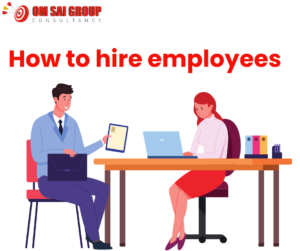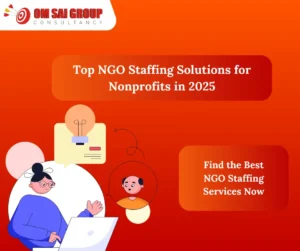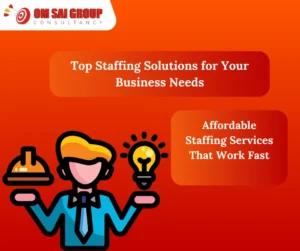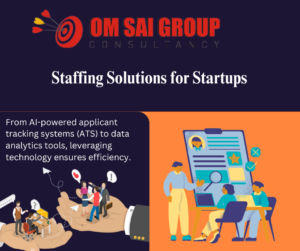how to hire employees

How to Hire Employees: A Complete Step-by-Step Guide for Small Businesses It is one of the most important decisions any entrepreneur will ever make to find and hire the best employees. Whether you’re a startup trying to construct your initial team or an expanding company augmenting your staff, learning how to hire employees successfully can make or break the success of your business. This guide will take you through every step of the hiring process, from planning through onboarding. Understanding the Importance of Strategic Hiring Prior to embarking on the hiring process, it is critical to comprehend why strategic hiring is significant. The right staff does not only occupy roles – they propel innovation, improve productivity, and drive your company culture. Recent research reveals that a poor hire can cost firms as much as 30% of the first-year pay of the hired employee in terms of turnover expenses, training costs, and lost output. Step 1: Define Your Hiring Needs Analyze Your Business Requirements The first thing to learn how to do when hiring employees is know specifically what you require. Begin by doing a detailed analysis of your existing staff and determining gaps. Ask yourself: Which particular skills are lacking in your team? Which departments are overworked or short-staffed? What positions will assist your business growth plans? Do you require full-time, part-time, or contract employees? Create Detailed Job Descriptions : how to hire employees A properly written job description is your first weapon for drawing top talent. List the job title, essential duties, required qualifications, preferred qualifications, and company culture. Be detailed in your expectations but realistic in requirements to discourage rather than deter qualified candidates. Step 2: Develop Your Recruitment Strategy Choose the Right Recruitment Channels Varying roles need varying recruitment strategies. For new grad or entry-level jobs, job boards such as Indeed or LinkedIn may suffice. For technical roles, think about industry-specific sites, professional networks, or staffing agencies. Don’t ignore the effectiveness of employee referrals—they tend to provide high-quality applicants who already know your company culture. Set Your Budget Decide how much you should spend in the recruitment process, such as job ad posting fees, employment agency fees, background checks, and onboarding costs. Keep in mind that spending money on quality recruitment initially will save you money down the line by minimizing turnover. Step 3: Screen and Interview Candidates Initial Screening Process Establish a disciplined screening process to effectively screen candidates. Begin with the review of resumes, searching for experience, career development, and matches with your criteria. Then, make phone or video screening calls to gauge communication skills and minimum qualifications before taking the time for complete interviews. Conduct Effective Interviews Structure your interviews around both technical competencies and cultural fit. Prepare behavioral questions that reveal how candidates handle real workplace situations. Consider panel interviews for important positions to get multiple perspectives and reduce bias. Key Interview Questions to Ask “Tell me about a time you faced a significant challenge at work and how you overcame it.” “How do you prioritize tasks when everything seems urgent?” “Tell us about a time when you had to work with a challenging team member.” “What drives you in the workplace?” Step 4: Check References and Conduct Background Verification Verify Professional References Always call past employers or professional references to confirm employment history, job performance, and reputation. Prepare targeted questions about the candidate’s quality of work, dependability, and potential to work in a team setting. Background Checks and Legal Compliance Based on your business and position demands, perform relevant background checks while abiding by applicable local employment laws. This may entail criminal background checks, credit checks for financial roles, or professional license verification. Step 5: Make the Job Offer Craft a Competitive Offer : how to hire employees Research market rates for similar positions in your area to ensure your offer is competitive. Consider the total compensation package, including salary, benefits, vacation time, professional development opportunities, and work-life balance perks. how to hire employees Negotiate Professionally Be prepared for salary negotiations and have a clear understanding of your flexibility. Remember that negotiation is often about more than just money—candidates might value flexible working arrangements, additional vacation time, or professional development opportunities. Step 6: Onboard Your New Employee Create a Structured Onboarding Process : how to hire employees An effective onboarding program ensures new workers get settled in quickly and contribute sooner. Plan for needed equipment, fill out paperwork, acquaint team members, and outline definite expectations for the first 30, 60, and 90 days. Set Clear Expectations Set clear performance standards, communication practices, and corporate policies on day one. Frequent check-ins for the first few months serve to nip any issues in the bud and ensure your new employee is acclimating well. Common Hiring Mistakes to Avoid When gaining expertise on how to hire employees, beware of these frequent errors: Hiring too quickly because there is an immediate need Prioritizing technical skills at the expense of cultural alignment Not thoroughly reference-checking Omitting offers based on competitive market analysis Oversight of the onboarding process Building a Sustainable Hiring Process Effective organizations create scalable, repeatable hiring processes as businesses grow. Write down your procedures, solicit feedback from new employees on their experience, and regularly optimize your process based on results and evolving business requirements. Frequently Asked Questions How long should the hiring process take? The standard recruitment process lasts 2-4 weeks for the majority of job openings, but senior or specialized jobs can take longer. Keep a balance between being detailed and effective in order not to lose good prospects to other companies. Should I hire for cultural fit or skills? The ideal solution is hiring people who have the required abilities and match the company culture. Nevertheless, skills are sometimes easier to learn compared to transforming someone’s working habits or principles. How much should I budget for hiring? Budget 15-25% of the new hire’s annual salary for recruitment expenses, such as advertising, interviewing time, background screening, and onboarding fees. Can I hire remote



 Access India’s top-tier legal professionals
Access India’s top-tier legal professionals

